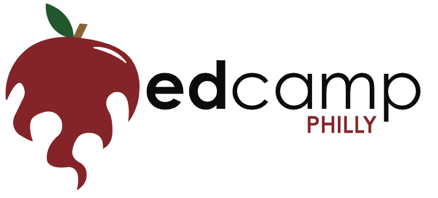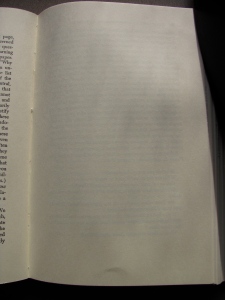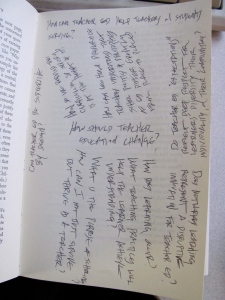The ISTE conference is a giant machine, a massive moving structure/tool/network/gathering, a meta-technology about technology, among other things. A collection of tools grafted onto a collection of gray matter—or the other way around. A conference is designed to do and be many things: teach, advocate, build community, pay for itself, promote itself, ensure its own survival, advance its agenda. Same diverse story for participants and presenters: they come to learn, to score swag, to meet new people, to find collaborators, to build their resume, to be challenged, to be surprised, to discover new ideas, to hang out, to have a family vacation. And the vendors come to sell: their product, their agenda, their view on the role of technology in education.
 But beyond—or beneath—what it’s designed to do is what it’s NOT designed to do. Remember, we’re talking about unpredictable humans here. Plug them into a structure like a conference and they’ll immediately start misbehaving and getting up to all sorts of no-good goodness. Their attention will wander. They will not follow directions. They’ll make up their own. They will be snarky. They will criticize. And they should. They will tinker in the margins, in the aisles, at the back of the room, wherever they can find a place to plug in. They will invent ways to make it fit their learning. They will hack the structure.
But beyond—or beneath—what it’s designed to do is what it’s NOT designed to do. Remember, we’re talking about unpredictable humans here. Plug them into a structure like a conference and they’ll immediately start misbehaving and getting up to all sorts of no-good goodness. Their attention will wander. They will not follow directions. They’ll make up their own. They will be snarky. They will criticize. And they should. They will tinker in the margins, in the aisles, at the back of the room, wherever they can find a place to plug in. They will invent ways to make it fit their learning. They will hack the structure.
Hacking Example 1: With ISTE Unplugged, ISTE has built in a DIY conversation-within-a-conference. It’s like a mini Educon, a free, dynamic space that floats untethered in the larger program of scheduled sessions and events. Presenters sign up on the Unplugged wiki for a 30-minute slot and lead a conversation about whatever’s their passion. This is smart.
Monday’s Unplugged highlight was the Edcamp Philly organizers sharing their unconference playbook. These are passionate educators who get the power of teachers teaching teachers, and who are fearless about relinquishing control and seeing what happens. That’s what a barcamp is all about, after all.
The delicious hacking irony here is that they were using a conference session (albeit one on the fringe) to distribute unconference blueprints.
It could be fun to do an Unplugged session about hacking ISTE. Flash mobbery and hijinks.
A related hacking notion: Chris Lehmann wrote yesterday urging us to connect the dots between the Educons and COLearningsEdcamps and other passionate DIY events sprouting out there. and
But let’s network the events. Let’s aggregate the ideas. And, in the words of Arlo Guthrie, “Friends, they may call it a movement.”….People all over the country have amazing ideas. Let’s come together and talk about them where we all live.
When you see the growing list of new edcamps on the Edcamp wiki, you start to see what Chris is talking about. He’s proposing a watershed approach where we gather in local contexts. But how to network the watersheds?



